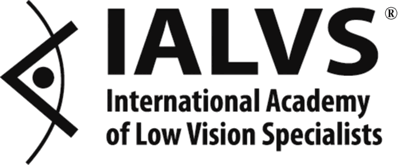As proud members of the International Academy of Low Vision Specialists (IALVS), our eye care team believes that there’s life after vision loss. That’s why we work hard to provide every one of our low-vision patients with the tools they need to continue living the independent lifestyle they deserve every day.
A recent study discussed in the Washington Post indicates that older patients with macular degeneration, glaucoma, or cataracts (diseases often linked to low vision) are at significantly increased risk of falling and breaking bones throughout their day-to-day lives. Below, we discuss the connection between low vision and the risk of potentially dangerous falls and how our IALVS-member low-vision specialists can help find solutions to maximize using the remaining vision after vision loss.
The Link Between Low Vision and Falls
Low vision significantly impacts a person's ability to navigate their environment safely. Visual impairments can lead to difficulties in judging distances, recognizing obstacles, and detecting changes in surface levels. These challenges are particularly prevalent in low-light conditions or unfamiliar settings. For individuals with low vision, everyday tasks such as walking up stairs, crossing streets, or moving around the house can become hazardous.
The role of a low vision doctor is to help patients with vision loss function better day to day despite their vision loss. Our IALVS-member eye doctors will thoroughly assess the extent of your vision loss and recommend personalized strategies and devices to enhance your visual function.
Along with recommendations such as safety bars around the house, getting assistance from others, and keeping things at an easy-to-reach level, we can also recommend specific low-vision aids to help you view your surroundings.
How Low Vision Aids Can Help Fall Prevention
While low vision aids have no direct ability to prevent falls, they can still play a crucial role in enhancing the quality of life for individuals with vision loss. These aids optimize the remaining vision and help users perform daily activities more effectively.
Some common low-vision aids include:
Magnifiers: Handheld magnifiers can help users read small print, identify objects, and see details up close, reducing the need to bend or move closer to objects, which can lead to falls. Stand magnifiers come with built-in stands that allow for hands-free use, providing stability that can help prevent the risk of tripping or losing balance while holding the magnifier.
Telescopic lenses: Monoculars are compact, one-eyed telescopic devices that help individuals see distant objects clearly, such as street signs or approaching obstacles, reducing the risk of tripping over unseen hazards. Binoculars offer enhanced depth perception and distance viewing, making it easier for users to detect changes in terrain or steps, thereby reducing fall risks.
Lighting solutions: Proper lighting is essential for minimizing fall risk. Adjustable task and high-contrast lighting can make it easier to see potential obstacles.
Our IALVS Eye Doctors Are Here to Help
Low vision significantly increases the risk of falls, but individuals can maintain their safety and independence with the right interventions. Low-vision aids and professional guidance from low-vision doctors are pivotal in helping individuals navigate life with vision loss so they can enjoy each day with greater confidence.
For more information or to schedule your low vision evaluation, visit us or call our eye clinic today.
Source: http://washingtonpost.com/wellness/2024/01/15/amd-glaucoma-cataracts-fall-injuries/

